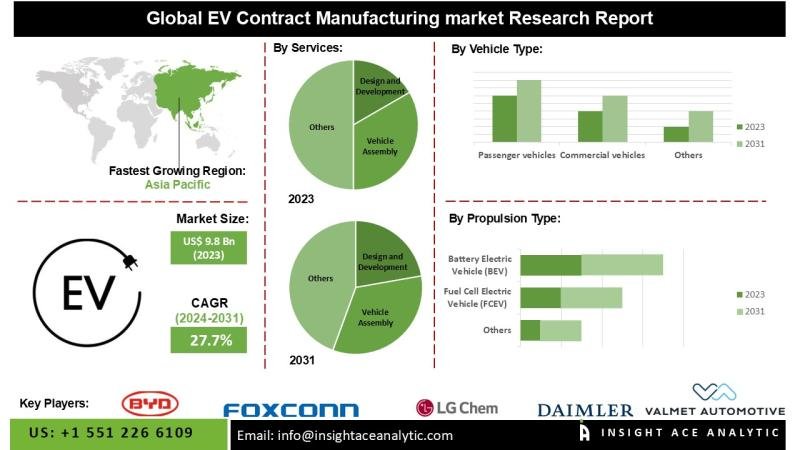29 April 2025

Battery-electric vehicle (BEV) and plug-in hybrid (PHEV) deliveries continue to rise in Austria, bouncing back after a sluggish 2024 performance. How does this compare to the wider EU market, and could upcoming changes to government incentives slow down this growth? Tom Hooker, Autovista24 journalist, examines the numbers.
A total of 4,233 BEVs took to Austrian roads in February, according to data from EV volumes. This marks an increase of 26.3% year on year. Meanwhile, the PHEV market grew by 15.6% in the month with 1,613 registrations. Combined, electric vehicle (EV) deliveries surged 23.2%.
In the first two months of 2025, BEV sales improved by 29.6%, reaching 8,034 units. This made Austria the ninth-biggest all-electric vehicle market in the EU, as it outpaced the bloc’s overall BEV growth.
PHEVs also enjoyed solid growth in Austria, up 20.9% with 3,319 registrations. This increase also outpaced the EU’s overall performance. Total plug-in volumes increased by 26.9% across January and February, recording 11,353 sales. This was the 11th-largest EV delivery total in the EU during this period. The bloc could not match this pace with a rise of 15.2%.
Austrian EV growth fluctuates
Austria’s EV market has seen fluctuating fortunes over the last few years. In 2020 and 2021, volumes soared, with increases of 97.5% and 102.4% respectively. However, in 2022, sales dropped by 2%, before returning to strong growth in 2023.
Then in 2024, plug-ins endured a decline of 3.2%. This was driven by BEVs which suffered a 5.5% fall in registrations, ending a yearly growth streak. PHEVs were responsible for the overall plug-in drop in 2022, declining by 9.3%.
Looking into the future, Austria is likely to see EVs return to growth. ‘A further increase is expected over the next one to two years. This will be driven by new models, some political measures and the increasing electrification of vehicle fleets,’ explained Robert Madas, Autovista Group’s regional head of valuations.
‘The majority of new BEV registrations are coming from fleets, accounting for around 70% of the market. This means approximately 30% of deliveries came from private buyers. The share of private buyers has increased significantly from around a 25% share in 2023,’ he outlined.
EVs captured 24.4% of total new-car registrations in Austria during 2024. This was a drop of 2.4 percentage points (pp) compared to their 2023 share, matching its sales decline.
Before then, plug-ins had extended their market hold every year since 2020. EVs made particularly good progress in 2021, more than doubling their share from 9.5% to 20%.
Broken down, BEVs have grown from a 6.4% share in 2020 to 17.7% in 2024. Meanwhile, PHEVs accounted for 6.7% of overall deliveries in Austria last year. This was an improvement from the technology’s 3.1% share in 2020.
Changing incentives in Austria?
Since 2016, there has been a subsidy in Austria for EVs, with the aim of increasing sales. Higher plug-in purchase incentives have been in place since 2020. From 2023, companies have been able to claim an investment allowance of 15% for the acquisition costs of EVs purchased for business purposes.
‘Until recently, the BEV market was supported by incentives for buyers including purchase subsidies, tax benefits, and charging infrastructure support. Yet, significant changes are underway in 2025,’ stated Madas.
Previously, buyers could receive up to €5,000 for the purchase of a new BEV in Austria. This was part of an incentives programme that was due to end in May 2025. However, according to the European Alternative Fuels Observatory (EAFO), the available state subsidies were exhausted in February, and recent updates are pending.
The country recently gained a new government. This followed months of negotiations and political deadlock after elections last September, as reported by Politico.
‘Due to the tight budgetary situation, it is unclear whether the new government will continue to subsidise new car buyers. BEVs were also fully exempt from motor-related insurance tax in Austria until April 2025. From now on, the tax is also applicable to BEVs. This will result in yearly costs, depending on the vehicle’s power,’ Madas said.
‘Annual costs are calculated based on continuous power and weight. For example, a 150kW EV could pay around €150 to €300 a year. Meanwhile, heavy EV models may exceed this amount significantly,’ he noted.
Company BEV benefits
However, BEVs remain attractive as company cars even without purchase subsidies. One reason for this is that the technology remains exempt from benefit-in-kind tax.
If a company vehicle is used by an employee for private purposes, taxation as non-monetary remuneration does not apply. The employer does not have to pay any related worker contributions, including social security, family compensation funds, additional employer contributions, or municipal tax.
Furthermore, no fringe benefit needs to be recognised when employers offer free charging for employee-owned EVs.
Austria’s growing charging infrastructure
Austria’s charging infrastructure has seen significant growth since 2020. As of the first quarter of 2025, the country has a total of 33,525 recharging points, according to the EAFO. This equates to a 465.1% increase from the first quarter of 2020.
Broken down, AC chargers represent 77.9% of recharging points in Austria, with DC chargers taking a 22.1% share. The latter has increased its share by 14.4pp since the first quarter of 2020, with AC chargers previously holding 92.3%.
Compared to EU markets with similar EV and BEV volumes, Austria has a relatively good level of charging infrastructure.
Using data from the first quarter of 2025, it is ahead of both Ireland and Portugal’s total recharge points by 29,700 units and 20,484 units respectively. This is despite recording fewer EV registrations than both countries over the first two months of the year.
However, Denmark currently has 8,679 more charge points. Conversely, in the first quarter of 2020, Austria led the nation by 3,547 units. Across January and February, Denmark sold 3,121 more EVs than Austria.
Renault and Alpine reign supreme
The Renault 5 and Alpine A290 led Austria’s best-selling BEVs top 10 in February. This was thanks to a record 243 deliveries in its seventh month of sales. The pair took a 5.7% market share. Behind was the Volkswagen (VW) ID.3 with 214 registrations. This was the hatchback’s best performance in the Austrian market since October 2023, giving it a 5.1% share.
Third place went to the BMW iX1, reaching 169 units and accounting for 4% of total registrations. The Tesla Model Y was just three units behind in fourth, with 166 sales and a 3.9% share. Then came the BYD Seal U, recording 159 deliveries and representing 3.8% of overall BEV volumes.
Sixth went to the Audi Q6 e-tron, with 152 registrations in its ninth month on the market. This gave it a 3.6% share. The VW ID.4 secured seventh with 146 units, equating to a 3.4% market hold.
Very close behind was the BMW iX3 in eighth, posting 145 units. The Skoda Enyaq landed ninth with 142 sales and a 3.4% share. This was the smallest monthly figure for the SUV since June 2024.
However, it meant that four VW Group models featured in February’s BEV top 10. Rounding out the table was the Hyundai Kona, reaching 137 registrations and accounting for 3.2% of total volumes.
Austria’s close BEV battle
The Renault 5 and Alpine A290 also took the lead across the first two months of the year. Together, they achieved 433 deliveries and took a 5.4% market share. However, the BYD Seal U emerged just 19 units behind, thanks to a strong January. The BEV captured 5.2% of overall registrations with 414 sales.
Third place went to the Audi Q6 e-tron with 349 deliveries and 4.3% market share, followed by the Skoda Enyaq, recording 337 registrations and taking a 4.2% hold. The model was tied with the BMW iX1. In sixth was the Tesla Model Y, reaching 313 registrations, which gave it a 3.9% share.
The VW ID.3 and ID.4 were seventh and eighth respectively. The former posted 290 sales and a 3.6% market hold, while the ID.4 managed 274 units and a 3.4% share. In ninth was the Kia EV3, accounting for 3% of overall volumes thanks to 240 units. The Cupra Born completed the top 10, with 225 sales and a 2.8% market hold.
Cupra controls Austria
The Cupra Terramar was the best-selling PHEV in Austria during February, with 262 registrations in only its fifth month on the market. This gave it a 16.2% share. The BMW X3 finished second with its best-ever monthly figure of 150 units. The SUV made up 9.3% of total volumes.
Then came the Ford Kuga, with 115 deliveries, accounting for 7.1% of PHEV sales. The VW Multivan placed fourth, reaching 65 registrations, its largest monthly total since June 2024. This gave it a 4% share. The BMW X1 and the Volvo XC60 tied for fifth with 60 units and a 3.7% hold.
Securing seventh was the BYD Seal in its fourth month of deliveries, posting 59 sales and a 3.7% share. The VW Golf followed with 57 units, representing 3.5% of total volumes.
In ninth was the BMW 5-Series, reaching 54 sales and a 3.3% market hold. The Volvo XC90 rounded out the top 10 with 42 units, capturing 2.6% of PHEV registrations.
A comfortable lead
Across the first two months of 2025, the Cupra Terramar held a comfortable lead at the top of the Austrian PHEV market. A total of 533 models were delivered, giving it a 16.1% share.
The BMW X3 claimed second thanks to 208 sales, equating to a 6.3% market hold. Third went to the Ford Kuga, recording 207 units and a 6.2% share. The Volvo XC60 finished fourth, posting 175 registrations and accounting for 5.3% of overall volumes. The VW Golf secured fifth with 144 deliveries, representing 4.3% of the PHEV total.
Sixth went to the Audi Q7, reaching 134 sales and a 4% share. This was followed by the BMW X1 and X5, which tied for seventh with 115 units. In ninth was the BYD Seal, posting 107 registrations and making up 3.2% of total volumes. The BMW 5-Series claimed 10th, with 100 deliveries and a 3% market hold.








